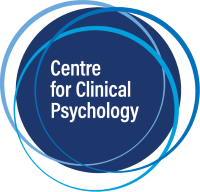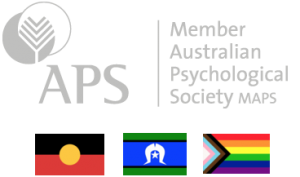The Transition to Motherhood –
Psychological Factors Associated with Pregnancy, Labour and Birth
By Dr Emma Symes, MAPS, CCLIN. The Centre for Women’s Mental Health, The Royal Women’s
Hospital
The ‘ordinary miracle’ of pregnancy and birth is a time of enormous physiological, social and
psychological change for women. How a woman and her significant others adapt to the changes
in this period can influence the woman’s adjustment and her chance of developing mental health
difficulties. This matters for the woman, but it also matters for her baby and for the beginnings of
their relationship.
Factors Influencing the Transition to Motherhood
The transition to motherhood begins antenatally and is influenced by an array of factors, such as the
life circumstances of the parents, the social environment, and the circumstances of conception. It is
also influenced by the level of support provided by the woman’s partner and family as well as the
physical health of the mother and her unborn baby. The mother’s experiences within her family of
origin, her past or current mental health issues and any current or unresolved conflict, loss or
trauma can also affect, and sometimes disrupt, this transition (Mares, Newman & Warren, 2011).
The perinatal period is a time of enormous change and opportunity. Psychologists can have an
important role providing mental health treatment in this period, which benefits the mother, her
partner and of course her baby. Yet, mental health difficulties are only one end of a continuum of
adjustment. Whilst not every pregnant woman develops mental health difficulties, every pregnant
woman must accommodate and adjust to the baby growing within her. Psychologists can also have
an important role supporting adjustment and the psychological work of pregnancy.
The Psychological Work of Pregnancy
During the nine months of pregnancy, the mother begins to imagine the baby she is carrying.
Brazelton and Cramer (1990) described pregnancy as the dawning of attachment, a period of
rehearsal and anticipation. The mother must also adjust to the changes to her identity, body,
relationships and career, as well as prepare for birth and begin to reconcile the sacrifices associated
with becoming a mother. Her relationship with her partner also undergoes substantial change, and,
although this can have considerable bearing on adjustment and on the work psychologists
undertake, this will not be the focus of this paper (eg. Cheng, Rifas-Shiman, Perkins, Rich-Edwards,
Gillman, Wright & Taveras 2016). Pregnancy can also be a time of intense emotions and
ambivalence which can fuel the psychological work of pregnancy (Raphael-Leff, 2010).
The psychological aspects of pregnancy evolve alongside the physiological changes. The
physiological aspects of pregnancy tend to be the focus of attention, while the psychological aspects
of pregnancy and new parenthood tend to receive less consideration. For psychologists working in
this area, normative psychoeducation about anxiety, ambivalence and the evolving nature of
psychological states in pregnancy can be relieving for many women. When normative
psychoeducation is insufficient, this may be the first indication that the woman requires further
assessment and treatment.
Previous pregnancy loss can alter the psychological adjustment to pregnancy. Pregnancy loss can
take many forms, such as miscarriage and still birth, termination, infants born with a disability,
prolonged infertility as well as adoption or the removal of a baby. Women may present with
heightened anxiety, anger, guilt or shame. In this situation, the woman and her partner may benefit
from the opportunity to work with a psychologist to help them grieve past losses whilst also
preparing for the new baby.
The first trimester – adjusting to the idea of pregnancy
The first trimester of pregnancy is the period between conception up until 12-weeks gestation. It is
a period of marked hormonal and physiological changes, but in the absence of obvious external signs
of pregnancy. In this period women are most likely to experience fatigue and nausea, which can
cloud or intensify emotional responses. For a woman with constant nausea and vomiting, it can be
difficult to feel excited about the pregnancy, and may even intensify ambivalence and questions
about continuing the pregnancy. For another woman with a history of miscarriage, the hormonal
changes can intensify anxiety about carrying a baby to term. Foetal screening, now available in the
first trimester, can be reassuring for parents or it may introduce intense anxiety about the baby’s
health and development. Threatened miscarriage or previous pregnancy loss can interfere with
imagining the baby to be.
The second trimester – the foetus is experienced as separate to the mother
In this period the mother feels the baby move for the first time, and the mother may feel more
physically comfortable and continues to imagine her baby. Stern (1995) noted that generally
between the fourth and seventh months of gestation, imaginings about the baby intensify, are
elaborated, and peak around the seventh month. He noted that between the seventh and ninth
month, the specificity of these imaginings reduces, and this slight disorganisation creates room for
the mother to connect with the ‘real’ baby, as distinct from the baby of her imagination (Brazelton &
Cramer, 1990). For psychologists in clinical practice there are several self-report measures which
can be used to assess the maternal-foetal relationship (for a review of measures see Brandon, Pitts,
Denton, Stringer & Evans, 2009).
Third trimester – preparing for arrival
During the final months of pregnancy, women typically begin to prepare for the arrival of the baby
and shift their attention to the birth, which can evoke intense anxiety. Women are encouraged to
consider the practical aspects of delivery and pain relief options. In this period women’s anxieties
about something going wrong with the birth and/or their baby may re-emerge.
Labour and Birth
It is impossible to capture the range of experiences and reactions that women and their partners can
have to the birth of their baby. Parental attributions and experiences during labour and birth
contribute to the relationship with the baby, and can shape the meaning of what this-particular-baby
represents for this-particular-family.
A difficult or traumatic birth can leave a mother emotionally and physically exhausted. This can
sometimes result in a cascade of difficulties with feeding, settling and other mother-infant
relationship difficulties. Research suggests that approx. 2-9% of women meet criteria for PTSD
following birth (Grekin & O’Hara, 2014), and these estimates increase to between 24 – 44% amongst
mothers of high risk infants who require admission to the neonatal intensive care unit (Kim, Lee,
Kim, Namkoong, Park, & Rha, 2015). When the nine months of pregnancy are truncated by
premature birth, parents may be left feeling incomplete, unprepared and awash with a variety of
anxieties about the health of their baby. Feelings of anxiety about the baby’s health or feelings of
guilt for not having carried the baby to term can be carried over into early parent-infant
relationships. Other times a birth may be regarded by the medical staff as being routine and
successful, but the woman feels it failed to meet her expectations and she felt afraid and out of
control. This mother may later present to a psychologist because she is not enjoying motherhood
and believes she is failing to meet (her) standards of a good mother. Psychologists can support
families coming to terms with these experiences, as well as assist them to understand baby’s cues
and communications, and remain emotionally connected to their baby.
Attachment Issues in the Transition to Motherhood
Attachment issues are woven into the transition to motherhood. As parents begin to contemplate
their relationship with the baby, both during pregnancy and later with their newborn, their own
attachment (or relationship) history usually within their family of origin, comes to the fore. During
this period, relationships issues can be powerfully reactivated, potentially reworked and transmitted
inter-generationally, from the mother to her infant.
The capacity of the mother to respond sensitively to her baby is at the heart of secure infant
attachment. It is well understood that maternal mental health issues can compromise the motherinfant relationship. Whilst a mother need only be, in Winnicott’s term, “good enough”, a mother
who has negotiated the transition to motherhood perhaps ‘well-enough’, is more likely to be
psychologically and emotionally available to contemplate the cues and needs and ultimately the
mind of her infant (also called reflective function), which supports neurodevelopmental outcomes
and emerging infant self-regulation (e.g., Fonagy, Steele, Steele, Moran & Higgitt; Newman
Sivaratnam & Komiti, 2015).
Reactivation and Reworking of Attachment
The mother’s attachment status shapes the way she organises her thoughts, feelings and memories
of herself and others in relationship with her. These are Bowlby’s internal working models.
Pregnancy and birth can be a period of intense reorganisation of identity, leading to reflections on
the way the woman herself was parented. Old attachments can be reactivated as parents consider
the relationships they wish to repeat or transform (Stern, 1991).
Intergenerational Transmission of Attachment
“After all she was a baby once and she has in her the memories of being a baby; she also has
memories of being cared for, and these memories either help or hinder her in her own
experience as a mother” Winnicott, 1987
In the transition to motherhood, a woman’s identity shifts from that of a child (dependent upon her
parent) to that of a parent (responsible for her own child) (Stern, 1991). In this shift, the woman
draws upon her history of identifications with her own mother (or other maternal/parental figures)
(Fraiberg, Adelson and Shapiro, 1975). These early memories of being cared for are stored in
procedural memory and are often not accessible via narrative. However, they have a marked effect
upon development and our capacity to form relationships, and are the relational mechanism
underlying the intergenerational transmission of attachment. In an important study, Fonagy, Steele
and Steele (1991) found that maternal representations of attachment amongst pregnant women
predicted the security of their infant’s attachment at 12 months of age, in 75 per-cent of cases.
Unresolved loss or trauma can transmit to infants via these specific interactional patterns (Newman,
Sivaratnam & Komiti, 2015). Attachment representations can be modified with sufficient alternative
relationship experiences, and pregnancy and parenthood often provide an important opportunity for
integration of new information and change in internal working models. Thus, psychologists working
in the perinatal period can assist women with this transition to ultimately enhance mother-infant
relationships, as well as identify early those at risk of relationship difficulties and begin the work of
true early intervention.
Final words
Pregnancy and early motherhood is an important period of risk and opportunity in a woman’s life.
Psychologists can support women adjusting to the changes motherhood brings, as well as identify
and treat women who present with diagnosable mental health difficulties at this important time.
Consideration of attachment related issues can help inform treatment and support the emerging
mother-infant relationship.
References
Brandon, A.R., Pitts, S., Denton, W.H., Stringer, C.A., & Evans, H.M. (2009). A history of the
theory of prenatal attachment. Journal of Perinatal Psychology and Health, 23(4) 201-222.
Brazelton, T.B. & Cranmer, B.G. (1990). The earliest relationship. Reading: Addison-Wesley
Publishing Company.
Cheng, E.R., Rifas-Shiman, S.L., Perkins, M.E., Wilson Rich-Edwards, J., Gillan, M.W., Wright, R., &
Taveras, E.M. (2016). The influence of antenatal partner support on pregnancy outcomes.
Journal of Women’s Heath 25 (7), 672-679.
Fonagy, P., Steele, H. & Steele, M. (1991). Maternal representations of attachment during pregnancy
predict the organisation of infant-mother attachment at one year of age. 62 (5) 891-905.
Fonagy, P., Steele, M., Steele, H., Moran, G.S., & Higgitt, A.C. (1991). The capacity for understanding
mental states: The reflective self in parent and child and its significance for security of
attachment. Infant Mental Health Journal (12(3) 201-218.
Fraiberg, S., Adelson, E., & Shapiro, V. (1975). Ghosts in the Nursery: A psychoanalytic approach to
the problems of impaired infant-mother relationships. Journal of the American Academy of
Child Psychiatry, 14(3), 387-421.
Grekin, R, O’Hara, M.W. (2014) Prevalence and risk factors of postpartum posttraumatic stress
disorder: A meta-analysis. Clinical Psychology Review 34 (5) 389-401.
Kim, W.J., Lee, E., Kim, K.R., Namkoong, K., Park, E.S., & Rha, D.W (2015). Progress of PTSD
symptoms following birth: A prospective study in mothers of high risk infants. Journal of
Perinatology, 35, 575-579.
Mares, S., Newman, L., & Warren, B. (2011). Clinical skills in infant mental health (second edition).
Victoria: ACER Press.
Newman, L., Sivaratnam, C., & Komiti, A. (2015). Attachment and early brain development –
neuroprotective interventions in infant-caregiver therapy. Translational Developmental
Psychiatry 3
Raphael-Leff, J. (2010). Healthy maternal ambivalence. Studies in the Maternal 2 (1).
Stern, D.N. (1995). The motherhood constellation. New York: Basic Books.
Winnicott, D.W. (1987). The ordinary devoted mother. In C. Winnicott, R. Shepherd, & M. Davis
(Eds). Babies and their mothers. P3-14. Reading, MA. Addison-Wesley.



